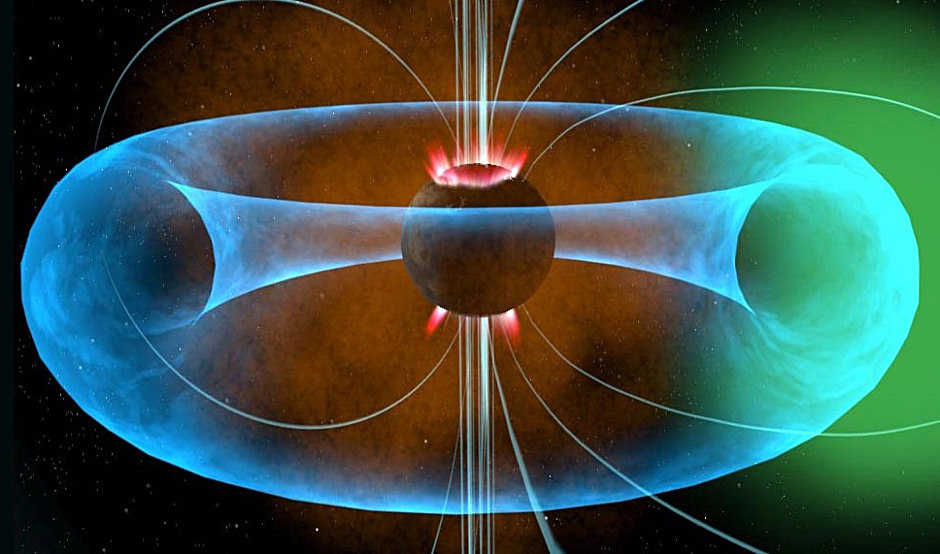A recent study conducted by SISSA and published in Physical Review Letters suggests that the mini-halos of dark matter scattered throughout the universe could serve as highly sensitive probes of primordial magnetic fields. The origin of magnetic fields in the cosmos has long remained a topic of debate among scientists, with one intriguing possibility being that they were formed near the birth of the universe itself – making them primordial magnetic fields.
Through their research, the scientists demonstrated that if magnetic fields are indeed of a primordial nature, they could cause an increase in dark matter density perturbations on small scales. This process would eventually lead to the formation of mini-halos of dark matter. Detecting these mini-halos would, in turn, provide evidence for the presence of primordial magnetic fields – an ironic twist wherein the invisible part of our universe could assist in unraveling the nature of a component of the visible universe.
Pranjal Ralegankar, the author of the study from SISSA, explains that magnetic fields are pervasive in the cosmos. One theory suggests that the magnetic fields observed so far could have originated in the early stages of the universe. However, this proposition lacks an explanation within the standard model of physics. To shed light on this aspect and develop a method for detecting primordial magnetic fields, Ralegankar’s research proposes an indirect approach based on the question of how magnetic fields influence dark matter.
While there is no direct interaction between them, an indirect interaction occurs through gravity. Primordial magnetic fields can enhance density perturbations of electrons and protons in the early universe, leading to the suppression of fluctuations on a small scale. Ralegankar states, “In the study, we show something unexpected. The growth in baryon density gravitationally induces the growth of dark matter perturbations without the possibility of subsequent cancellation. This would result in their collapse on small scales, producing mini-halos of dark matter. Although fluctuations in the density of baryonic matter are canceled, they would leave traces through the mini-halos solely through gravitational interactions.”
The findings of this research also suggest that the abundance of mini-halos is determined not by the current presence of primordial magnetic fields, but rather by their strength in the early universe. Therefore, the detection of dark matter mini-halos would strengthen the hypothesis that magnetic fields were formed very early, possibly within 1 second after the Big Bang.
This study highlights the potential of dark matter mini-halos as a means to uncover the origin of magnetic fields in the cosmos. By investigating their formation and properties, scientists may gain valuable insights into the early stages of the universe and the fundamental forces at play during that time. Further research and observations will be necessary to confirm these theoretical findings and potentially unlock the mysteries surrounding magnetic fields in the cosmos.

